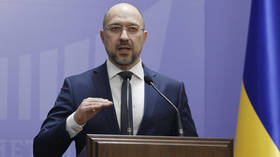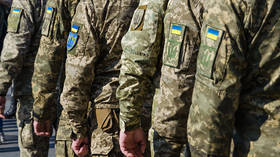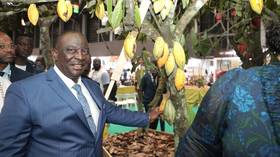Warm hearts in the permafrost
Most of Russia’s Nenets Autonomous Area lies above the Arctic Circle, with a coast bordering three Northern seas. The indigenous peoples are trying to preserve their cultural heritage to pass it to younger generations.
Whether it’s through the enchanting allure of song or the playful prancing of traditional games, or even the careful hands of an artist practicing his trade, the rich cultural diversity within the Nenets Autonomous District endures within the people who live here.
“While our older generation is still alive, we want to take our traditions and pass them on to younger generations. We also want to share with the world and the people who visit us about our way of life,” says Serafima Durykina, head of the Nenets’ national theatre.
Many of the formerly nomadic Nenets live in the region along with the settled Komi people. However, Russians make up the majority of the population. And they carefully preserve the Nenets lifestyle, says Foreign Affairs analyst Natalya Medvedeva.“Nenets culture is unique in the world and Nenets population is not so numerous as Russian. So Russian people make everything possible to preserve Nenets nature and culture,” Natalya Medvedeva says.
Local historian Marina Kolovangina says the area is unique for the number of different ethnicities there – including Nenets, Komi, Russians and Ukrainians living side by side.
Despite different ethnicities, people in the region live in peace side by side.
“We have children of different nationalities and we have no ethnic problems,” says Galina Korovina, a teacher of a boarding school in the region. ”The only problems we have are because of living conditions – we have orphans and children whose parents were deprived of parental rights. But we try to do everything for them, you know, human nature needs love.”
Another English teacher, Ekaterina Arteyeva, has been living in the region for 8 years now, and says she is proud to be part of life here. Three different cultures have successfully assimilated here, and the Nenets, Komis and Russians mutually benefit from their relations, she says.
Meanwhile, the local nature does do any favors for the inhabitants.
Andrey Semyonov, who has recently moved to the region and is working with the government there, said that the severe climate conditions impact many spheres of life, including construction.
”First of all, you must make [the] walls very thick, about half a meter, because the temperatures are about minus 52 degrees below zero [Celsius]. Last winter it was minus 53,” he said.
Naryan-Mar is the city at the center of the district, and though it is a modern town with a population of around 20,000, many of the old Nenets tradions are still observed.
“The face of a human being can only be created by the supreme god, the great Nome. It is not allowed for humans so instead we use the beak of a goose,” says tambourine man Filipp Ardeyev.
But even though it is called the Nenets Autonomous District, other cultures thrive here as well. Another indigenous group, the Komi, demonstrate their heritage through a re-enactment of their traditional wedding ceremony.
One of the interesting parts about the history of this area is in Pustozyorsk, a city that was here for 5,000 years and then just vanished, simply because the people moved away. About all that remains here is a cross which marks the spot where an arch priest of the old believers was ordered to be put to death by the Tsar, and it was at this place that he was burned alive. “Old believers” are Orthodox Christians who adhere to church principles from prior to the church reforms, known as the Great Schism, in the second half of the 17th Century by Patriarch Nikon, . Many of these old believers fled to the far north of Russia at the time.
“We old believers consider Pustozyorsk a sacred place, because the arch-priest and his colleagues were killed there. Now we organize a pilgrimage every year to honor them, and we have decided to build a chapel there in his name,” says Aleksandr Lyapunov, an old believer priest.
And just as in the days when Pustozyorsk thrived as a community, much of the culture there is dependent on water. In the remote areas above the Arctic Circle you will find Russian, Komi and Nenets settlements alike, using the resources of the Pechora River for their survival.
“Every summer we wait for the ship to arrive. The Pechora River is our means of survival,” explains Nikolay Usatov, head of a village.
And though certain details of life up here may have been lost, there seems to be little danger of losing touch with the collective heritage that makes the area so special.













